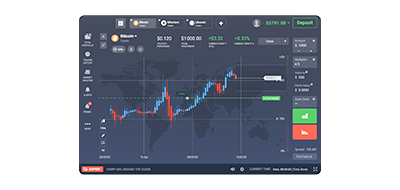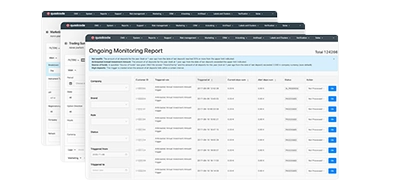Back

Trading
5 Day Trading Rules You Have to Know

Written by:
Vitaly Makarenko
read
Published:
April 24, 2024Updated:
April 25, 2024views
Table of contents
Day trading in the financial markets is a fast-paced and challenging endeavor that requires skill, intuition, and a firm adherence to certain fundamental rules. Understanding and following these rules can be the difference between success and failure for those looking to navigate the turbulent waters of day trading. This article breaks down five essential day trading rules that every trader, whether novice or seasoned, should know and incorporate into their trading strategy.
The List of 5 Essential Day Trading Rules
- Risk Management: Never Risk More Than You Can Afford to Lose
- Set Realistic Profit Targets and Stop-Loss Orders
- Stay Informed: Keep Abreast of Market News and Trends
- Embrace a Consistent Trading Strategy
- Understand and Accept the Psychology of Trading
1. Risk Management: Never Risk More Than You Can Afford to Lose
Effective risk management is non-negotiable in day trading. It’s not just about minimizing losses; it’s about strategically planning how much capital to risk on each trade. Traders should establish a clear risk threshold – typically, a small percentage of their trading capital – for each trade to safeguard against market volatility. Utilizing risk management tools like position sizing and a clear understanding of leverage can significantly minimize financial exposure. Adhering strictly to these limits ensures that traders can withstand losses without jeopardizing their entire trading account.
2. Set Realistic Profit Targets and Stop-Loss Orders
Establishing profit targets and stop-loss orders is fundamental in maintaining discipline in day trading. Profit targets are predetermined levels at which traders lock in gains, while stop-loss orders are set to close a trade automatically at a certain price to limit potential losses. This disciplined approach not only crystallizes profits but also minimizes the emotional impact of volatile market movements. It’s crucial that these targets are based on realistic market analysis and not wishful thinking, aligning with the prevailing market conditions and trading strategy.
3. Stay Informed: Keep Abreast of Market News and Trends
In day trading, information is power. Staying updated with market news and trends is critical for making informed trading decisions. This involves regularly monitoring economic calendars, following financial news updates, and understanding how geopolitical events or policy changes can impact market movements. Knowledge of market indicators, from currency fluctuations to stock market changes, enables traders to anticipate trends and make timely decisions. An informed trader is a prepared trader, ready to capitalize on opportunities or avert potential pitfalls.
4. Embrace a Consistent Trading Strategy
A successful day trader is one who adopts a consistent trading strategy. This means selecting a trading style that aligns with personal risk tolerance, goals, and market analysis. Consistency is key, whether it’s momentum trading, scalping, swing trading, or another strategy. It involves sticking to a well-tested plan rather than chasing market trends or reacting impulsively. A consistent approach breeds familiarity, fostering confidence and skill enhancement in specific trading scenarios.
5. Understand and Accept the Psychology of Trading
Day trading isn’t just a test of financial acumen; it’s a psychological challenge. Traders must be equipped to handle the psychological aspects of trading, from the stress of rapid market changes to the emotional upheaval of losses. Developing a trading mindset involves embracing patience, discipline, and emotional control. It’s about recognizing the impact of fear and greed and making trading decisions based on logic and strategy rather than emotional impulses. Building mental resilience is as important as building trading skills.
Common Day Trading Pitfalls to Avoid
While day trading offers the potential for significant profits, it also comes with its share of challenges and pitfalls. Awareness of these common mistakes can help traders navigate the market more effectively and enhance their chances of success.
Overtrading: Quality Over Quantity
One of the most common pitfalls in day trading is overtrading. It’s the act of trading too frequently or making trades without a strategic basis, often driven by the urge to constantly be in the market. Overtrading can lead to increased transaction costs and can diminish overall profitability. The key is to focus on quality trades based on sound analysis rather than the quantity of trades.
Chasing Losses
After incurring losses, some traders fall into the trap of ‘chasing losses’ – trying to recover losses by making more trades. This behavior can lead to further losses and is a dangerous cycle. It’s important to recognize when it’s time to step back, evaluate what went wrong, and adjust the trading strategy accordingly.
Failing to Adapt to Market Conditions
One critical pitfall in day trading is the failure to adapt strategies to changing market conditions. Markets can shift rapidly, and a strategy that works one day may not be effective the next. Successful day traders constantly analyze the market and are willing to adjust their strategies in response to new information or trends.
Overreliance on Leverage
While leverage can amplify gains in day trading, excessive reliance on it is a common pitfall. Overusing leverage can magnify losses just as it can magnify gains, potentially leading to substantial financial setbacks. Responsible use of leverage involves understanding its risks and using it judiciously within the confines of a well-structured risk management plan.
Avoiding these common pitfalls requires discipline, a clear strategy, and a continuous learning mindset. By being aware of these challenges and actively working to mitigate them, day traders can improve their performance and enhance their profitability in the market.
Conclusion
In day trading, success is not just about making profitable trades; it’s also about implementing and adhering to key rules that govern trading behavior. These five rules—focusing on risk management, setting realistic targets, staying informed, embracing a consistent strategy, and understanding trading psychology—are fundamental to creating a sustainable and successful trading career. By internalizing and applying these rules, traders can significantly improve their chances of success in the dynamic world of day trading.





